SDEA Spotlight: Kamini Ramachandran
by SDEA
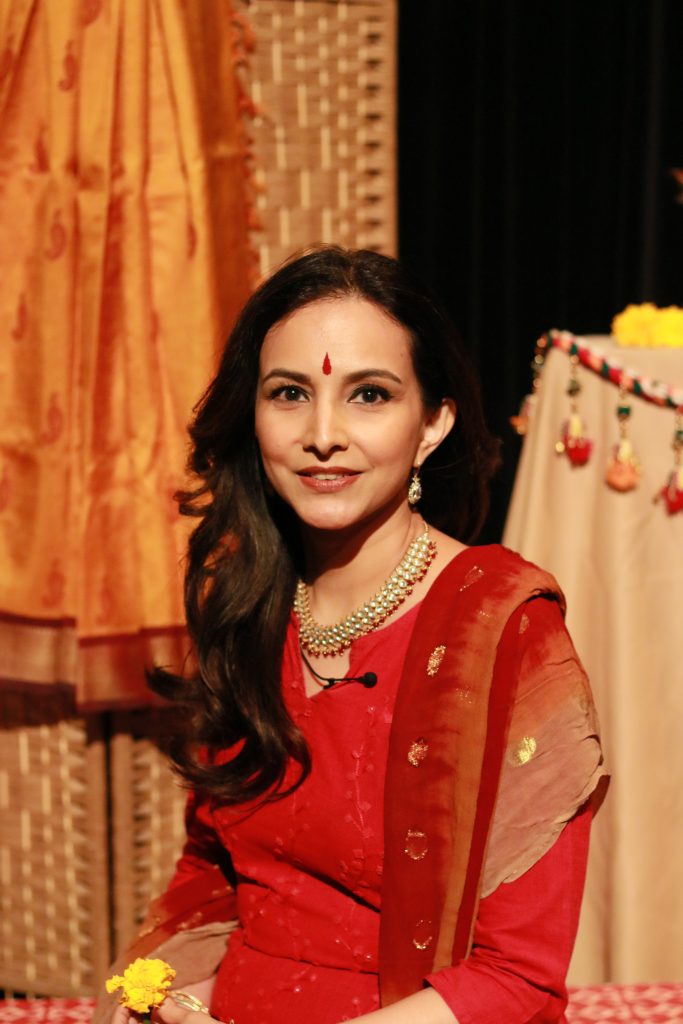
SDEA Spotlight is a series of short interviews with SDEA members that peel back the curtain behind their practice, their beliefs about arts and drama education and their influences.
Kamini Ramachandran is a pioneer in the Singapore and Asia storytelling scene. She is the artistic force behind MoonShadow Stories – the first contemporary storytelling entity to focus on performance storytelling for adult audiences and the founder of The Storytelling Centre Limited. Kamini is also a fellow of the Royal Society of Arts with a BA (Hons) in English Language & Literature and MA Arts Pedagogy & Practice from UK. She is the creative producer of StoryFest: International Storytelling Festival Singapore and has produced World Storytelling Day in Singapore since 2005.
- What are you working on at the moment?
Every Sunday, two young storytellers from The Storytelling Centre Ltd perform Terrific Tales at The Artground in Goodman Arts Centre. This is part of the Young Storyteller’s Mentorship Project that I founded to nurture emerging talent. I’ve been teaching my storytelling course for almost seven years at LASALLE College of the Arts and I enjoy working with young talents. As part of the mentorship, I organise monthly storytelling performances at Cluny Court too. There’s a fresh theme for each month with Spooky Pumpkin Tales for October! So I’m busy working with my young storytellers on these regular programmes.
Currently, I am collaborating with conductor Moses Gay and the Singapore Chinese Orchestra for Concert for Little Tots: Tales and Legends on 7th October 2017. Though I have performed with musicians before, this is the first time I’m working with a Chinese orchestra. In this performance targeted at 2 to 5 year olds, I will be re-telling Chinese folktales in English and performing at the new Singapore Chinese Cultural Centre Auditorium. I’m glad that the SCO also understands the power of storytelling in reaching out to young audiences and hence, this collaboration.
As part of my residency at the National Gallery, I have monthly performances inside various galleries focusing on different artworks. Stories in Art is an ongoing programme that I am constantly working towards; researching artworks and connecting folktales to art.
For Deepavali, I’m working with the National Museum of Singapore on a private sharing from a storyteller’s perspective tentatively titled ‘A Deepavali Tale – A Storyteller’s Private Collection’ on 14th October, part of the museum’s ‘A Lighter Side of History’ programme. I will be telling the story of The Ramayana to explain why we celebrate Deepavali. I will also showcase my personal collection of Ramayana artefacts which will be on exhibition. They are antique batik story cloths from Yogjakarta and vintage Balinese Ramayana shadow puppets of Hanuman, Rama, and Sita. The performance will culminate with a garland making activity that audiences can take back as a reminder of the story. I hope that audiences will understand the energy, magic and underlying meaning of Deepavali - the festival of lights.
I just came back from the Hans Christian Andersen Festival in Denmark and am preparing for my October trip to Edinburgh for the Scottish International Storytelling Festival.
Those are the main things that are coming up in the next few weeks. But of course, I’m already preparing for StoryFest which will happen from 1 - 3 June 2018 at The Arts House and also for World Storytelling Day in March.

2. What’s the direction of your work? Has it changed over the years?
I get a lot of opportunities as an artist and after performing for so many years, I’m aware that there is a need to create my own practice to guide younger storytellers, who may not have had the opportunities I’ve had. I’m more of a mentor, a producer and a director now.
Setting up the non-profit arts organisation, The Storytelling Centre Limited, is definitely the new direction for my work. Moonshadow Stories is mainly my own commissioned and artistic work. The Storytelling Centre Limited produces StoryFest and the Young Storytellers Mentorship Project. I love festivals and I enjoy teaching and organising, it is a skill that I have always had. So why not broaden that? This year, we ran the inaugural Young Storytellers Mentorship Project from March to June which was supported by the National Arts Council’s youth arts department’s Noise Singapore. Selected from an open call, applicants went through rigorous training and graduated with a ticketed performance, A Tapestry of Tales at StoryFest.
The Young Storytellers’ Mentorship Project is something that I am really passionate about. In the next couple of years, I’d like to support and nurture young storytellers so that we have trained and highly skilled storytelling artists with a strong repertoire in the future.
3. What is a dream project that you hope to do?
The dream project is of course StoryFest! For the inaugural edition this year we sold out 9 out of 10 events and received such positive feedback from audiences. Fulfilling your dreams requires hard work and commitment, and I am grateful for the support I have received from festival co-presenter The Arts House.

4. How did you start out doing what you do?
My maternal grandfather was a storyteller. I spent many of my childhood years growing up with my grandparents and I picked up Malayalam, Tamil and some Sanskrit and of course Malay and English. My grandfather told me all the great Indian epics; The Ramayana, The Mahabharata, The Panchatantra and The Jataka Tales, as well as other folktales. As a child, I didn’t think of my grandfather as a storyteller handing down an art form or his repertoire. He was just my grandfather who told stories!
I studied English Language and Literature in university and worked with the written word. When I had my children, I began to tell them stories. I realised that not all parents were telling stories and not all preschools had storytelling – it was mainly reading aloud from a book. Also, the preschools were not telling Asian stories and that’s when I decided to go in as a parent volunteer and tell these cultural stories.
MoonShadow Stories was formed and I began to focus on the spoken word. Reigniting the beauty and wonder of storytelling to adults was the way to ensure that children would benefit. Storytelling for adult audiences means you can perform longer and complicated stories, handle mature topics and explore different genres. For children, the stories are usually much shorter and told in a highly interactive and participative way with lots of expressions and moments to get involved with props and visuals. When people listened to stories for adults they wanted more, and so began the requests for performances. Using my language and literature training and my ability to write, craft and adapt stories, I began to conduct workshops. So, that’s how it started all those years ago.
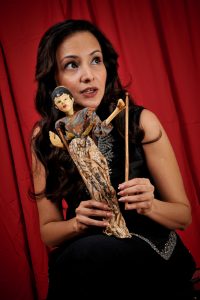
5. How do you keep your work fresh?
I travel a lot for international festivals. It is always a challenge as I have to think about the audience in this different country and how they are not familiar with my stories, culture, heritage and style. Like all art forms, it is different according to landscape, geography and culture. I recently came back from Denmark for the Hans Christian Anderson International Storytelling Festival. Denmark is rich with Nordic legends and mythology, which is not dissimilar to the Indian and Asian epics of warriors, kings, giants, ogres and their quest in crossing the ocean to fight. It was wonderful to be able to tell stories there because they all speak English fluently and our common lore of gods and goddesses formed an immediate bridge.
I have also had to be translated when I am overseas. When I was in the United Arab Emirates, I had an Arabic translator, who translated simultaneously as I told the story! This also happened in Rome. To keep stories fresh, you cannot have one fixed way of telling it, you have to be ready to adapt and be spontaneous. The same stories I tell in Singapore may transform because of the language, the audience and their level of familiarity with storytelling. So, I am always thinking of new ways to tell the story to engage my new audiences - and whatever strategy or technique I try out in these new environments, I’ll come back and apply it at home. That’s how I keep it fresh, through travelling and performing at global festivals.
6. What do you think makes a good/perfect teaching artist?
I personally feel a good artist educator is someone who is very much in touch with their own art form and is a practitioner. This connectedness and consistent practice of the art form allows us to teach and guide students in a more informed manner. It is necessary to be up to date and in touch with our genre and industry so we can provide the best for our students.
7. In one word, sum up your teaching artist journey.
Storytelling. Because that is also how I teach - imparting through story.
8. Why are stories important? Why should it be a part of school?
Stories are important because they are the anchor to our cultural identity. In a multicultural environment, it is important to hear everybody’s story and not just yours. Stories are also a way for children and young people to express their feelings, their opinions, their thoughts and ideas in a very safe environment. Introducing stories in schools should be something natural so that the children feel empowered to play with the imagination and speak in the language of story, where anything can happen!
I believe that all teachers should be storytellers. I also think all storytellers are inadvertently teachers. I teach storytelling to youth 16-24 years and I also work with young audiences from preschools, but I’m not their regular teacher, I’m not there all the time. The opportunity to hear stories and the chance for a child to articulate their own stories must be a constant part of education. This will lead to a much more creative society that knows how to tap into the world of imagination and suspend disbelief, and through that, problem solve.
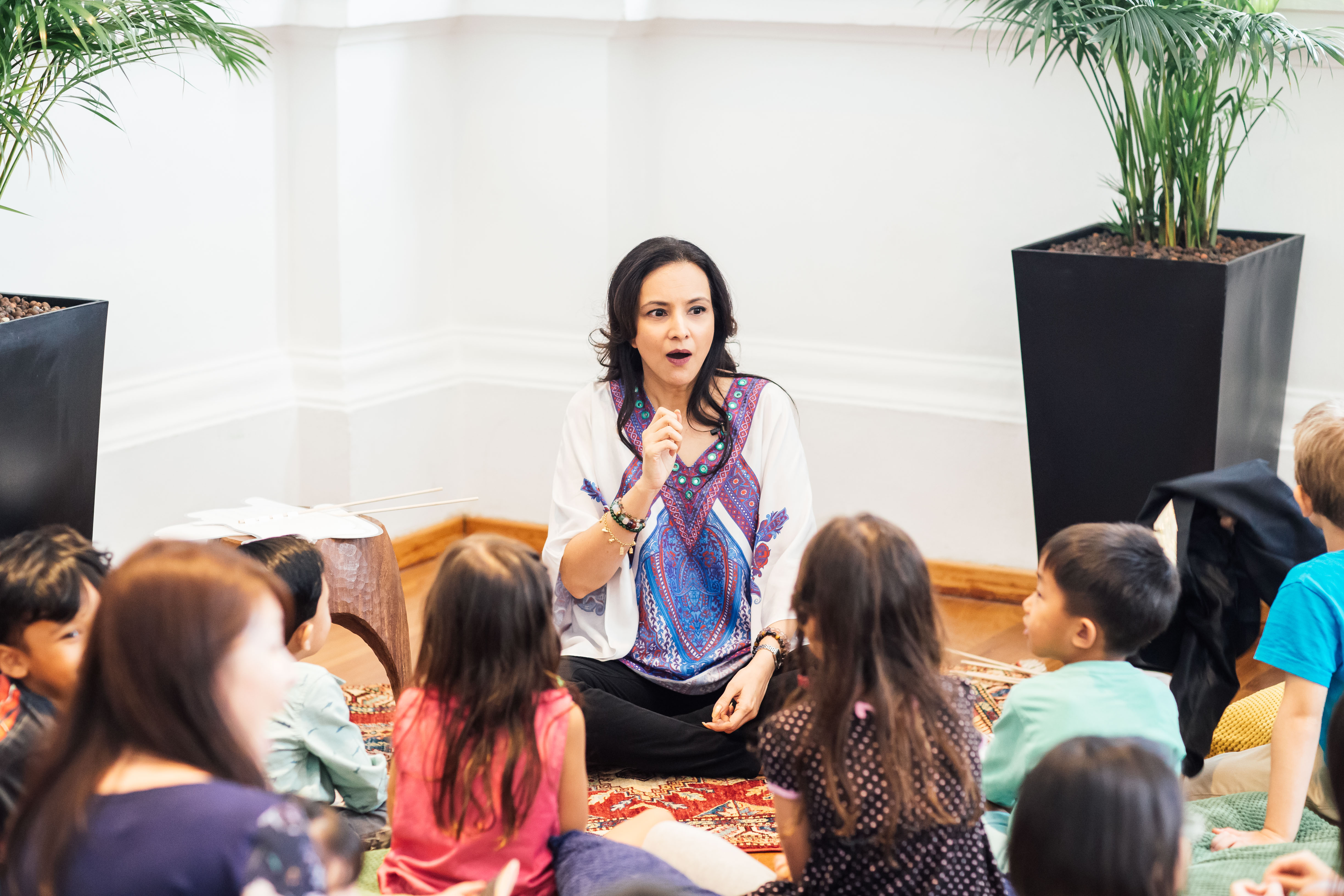
9. Who was the biggest influence or had the most impact on you?
My late grandfather. I still have very vivid memories of him telling me stories in all the different languages. I can see his facial expressions, his hand gestures, hear his voice and how he used to play with sound effects and character voices. My own style is influenced by him. He was just being a grandfather and enjoying himself by telling me stories, because this is how he would have been brought up in his village.
10. What is your most memorable moment in the classroom/on stage?
When I was young, I went to many different primary schools because of the nature of my father’s work. I can still remember my early primary teachers. I don’t remember their names, but I can see their faces and hear the stories that they told me. This is how I picked up Bahasa Malaysia; the vocabulary and the pronunciation and the rhythm of the language. My teachers told stories during the language lesson and I looked forward to this! I suppose I am a very aural learner, which is why I can still hear and remember what happened.
Recently in July, I was asked to perform for the Patron of the Arts Awards 2017. I told three different stories, with The Teng Ensemble musicians, Riduan Zalani and Drum Gaia percussion group, and Apsara Arts dancers. Standing there in front of all the patrons, the NAC community and everybody who has supported the arts, and to be able to collaborate with the different arts groups was deeply moving for me. It was an incredible moment as a solo storyteller, accompanied by my fellow artists from different genres, and performing to all the patrons of the arts.
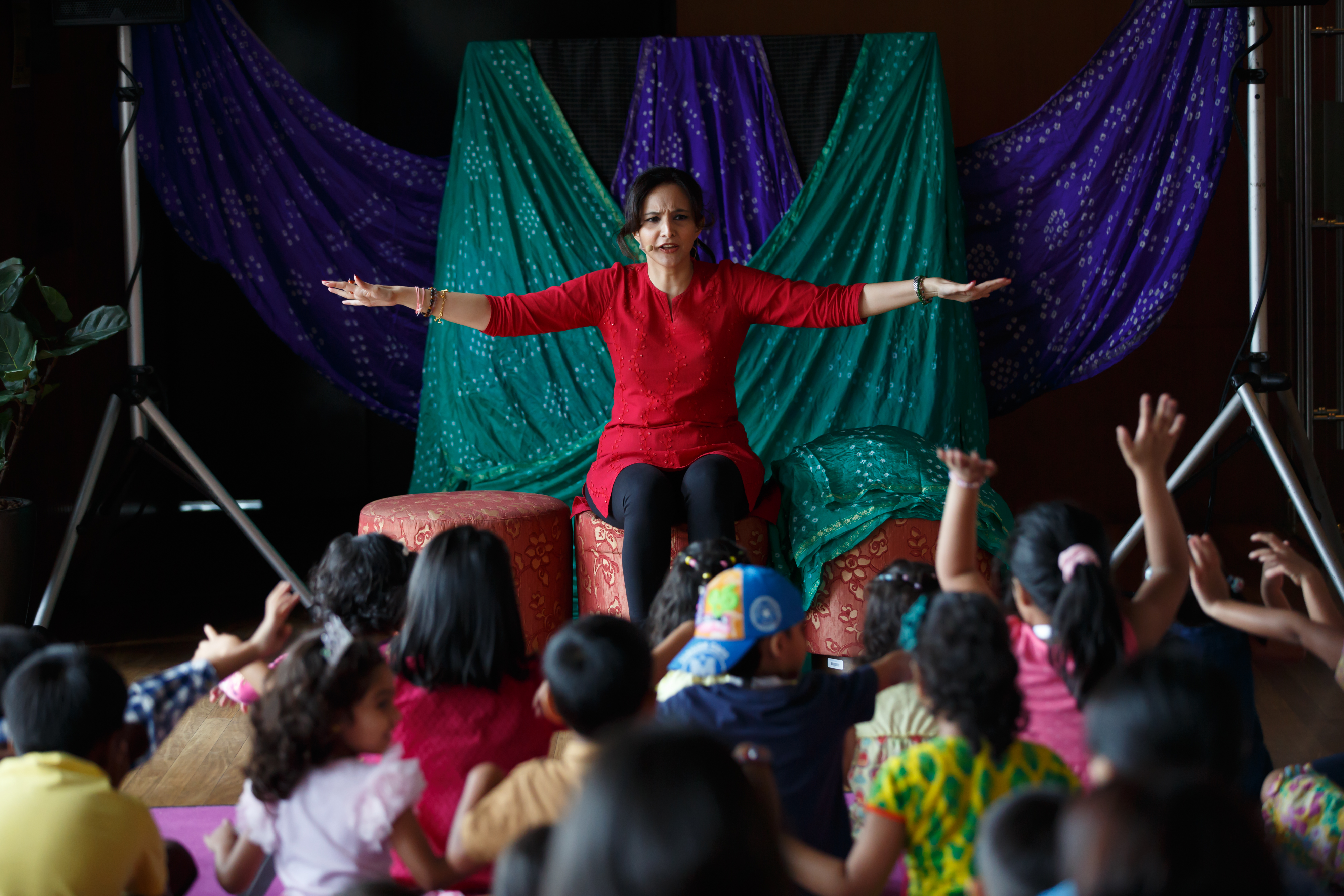
11. Share a teaching tool that you love to do.
Whenever I work with a new group of storytelling students, the first thing I start with is a stimulus-based storytelling activity. I will place something in the middle of the group as a stimulus to start a story. No one knows what it is going to be. It can be a bag of small seashells, or it can be a bag of saga seeds. The student picks it up and spontaneously starts telling a story – but it cannot be literally linked to the item! It is everything else other than that. There is no time to think! This activity shows that all of us are able to imagine and tap into our inner storyteller. We think that we can’t tell stories, that we don’t have the ability to be creative and we are going to be stuck for words. But this activity over the last many years has shown that everyone has their own interpretation of the world, and are able to view objects as metaphors - and that is fundamental in storytelling. Storytellers are always working in the world of metaphors and symbols - which is why there is magic, the supernatural and incredible voices in stories. The ability is within all of us, perhaps we have suppressed it. Maybe we have been brought up to think that we shouldn’t be indulging in creativity. So, this stimulus-based storytelling activity has been very powerful in affirming creativity.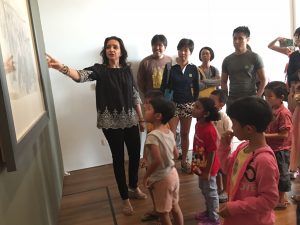
12. What do you hope to see in Singapore's arts landscape in future?
The way to sustain strong and long term artistic practice is to have very good arts administrators. We have very strong artists, yet we lack sufficient managers and administrators to allow these artists to fly. A lot of us (artists) struggle to realise our dream projects, to think bigger and do greater things because we are bogged down by management administration and the day-to-day operations. Arts administrators support visionaries and make those dreams come true through the management skills that they have. It would be lovely to have more arts managers.
Don't miss these upcoming events by Kamini and the young storytellers from The Storytelling Centre Ltd coming your way this Oct!
7 Oct – Concert for Little Tots – Tales & Legends
- 1 & 8 Oct – Favourite Fairytales
- 15 & 22 Oct – Tales from The Panchatantra
- 29 Oct – Halloween Tales
14 & 15 Oct – Stories in Art
21 Oct – Spooky Pumpkin Tales



